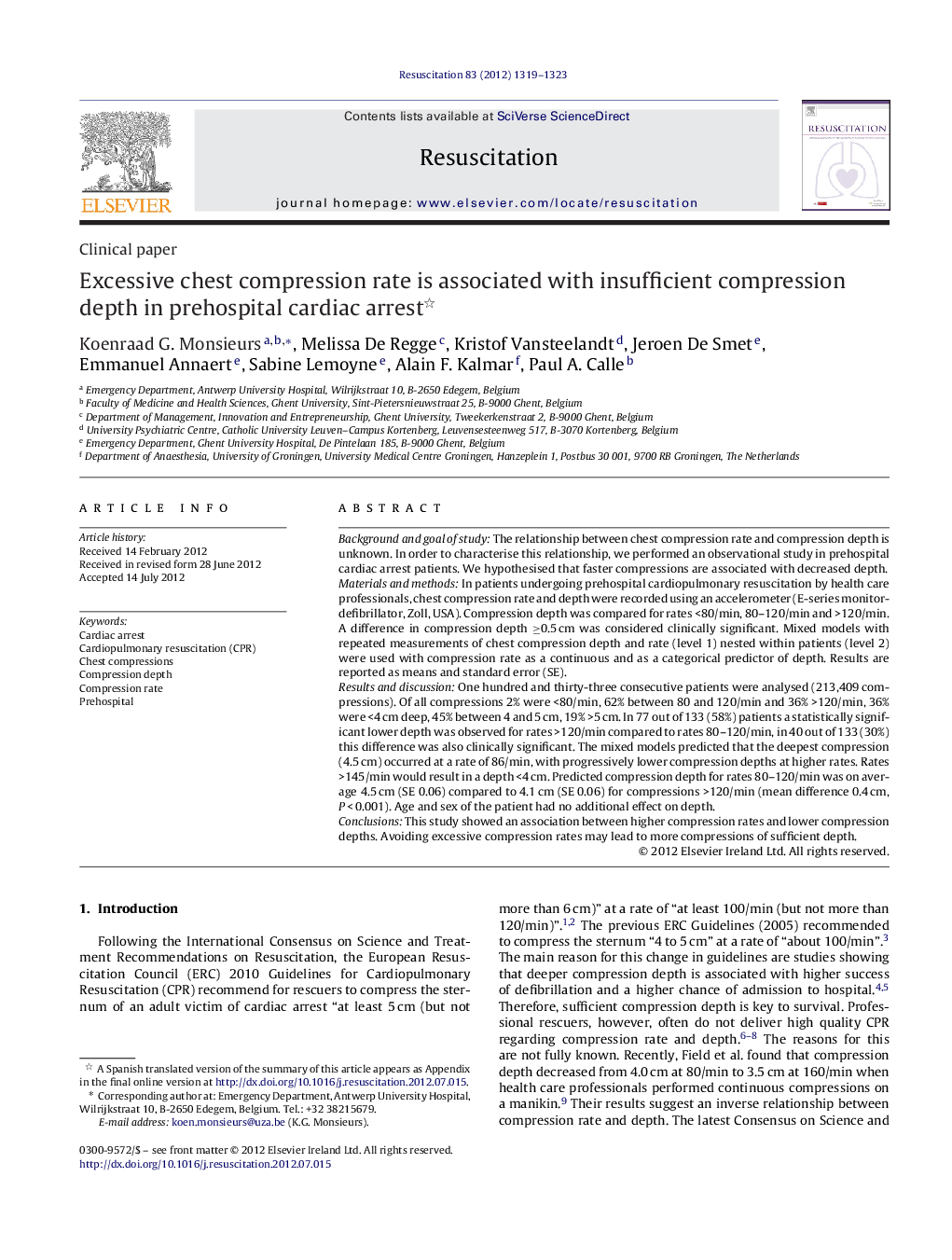| کد مقاله | کد نشریه | سال انتشار | مقاله انگلیسی | نسخه تمام متن |
|---|---|---|---|---|
| 5999059 | 1181463 | 2012 | 5 صفحه PDF | دانلود رایگان |

Background and goal of studyThe relationship between chest compression rate and compression depth is unknown. In order to characterise this relationship, we performed an observational study in prehospital cardiac arrest patients. We hypothesised that faster compressions are associated with decreased depth.Materials and methodsIn patients undergoing prehospital cardiopulmonary resuscitation by health care professionals, chest compression rate and depth were recorded using an accelerometer (E-series monitor-defibrillator, Zoll, USA). Compression depth was compared for rates <80/min, 80-120/min and >120/min. A difference in compression depth â¥0.5 cm was considered clinically significant. Mixed models with repeated measurements of chest compression depth and rate (level 1) nested within patients (level 2) were used with compression rate as a continuous and as a categorical predictor of depth. Results are reported as means and standard error (SE).Results and discussionOne hundred and thirty-three consecutive patients were analysed (213,409 compressions). Of all compressions 2% were <80/min, 62% between 80 and 120/min and 36% >120/min, 36% were <4 cm deep, 45% between 4 and 5 cm, 19% >5 cm. In 77 out of 133 (58%) patients a statistically significant lower depth was observed for rates >120/min compared to rates 80-120/min, in 40 out of 133 (30%) this difference was also clinically significant. The mixed models predicted that the deepest compression (4.5 cm) occurred at a rate of 86/min, with progressively lower compression depths at higher rates. Rates >145/min would result in a depth <4 cm. Predicted compression depth for rates 80-120/min was on average 4.5 cm (SE 0.06) compared to 4.1 cm (SE 0.06) for compressions >120/min (mean difference 0.4 cm, P < 0.001). Age and sex of the patient had no additional effect on depth.ConclusionsThis study showed an association between higher compression rates and lower compression depths. Avoiding excessive compression rates may lead to more compressions of sufficient depth.
Journal: Resuscitation - Volume 83, Issue 11, November 2012, Pages 1319-1323